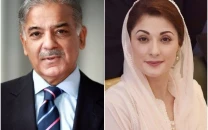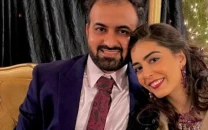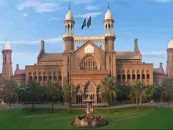David & Goliath: Karachi’s tiny Qingqi muscles in on big-bus routes with cheaper fares
The fare is cheaper but the motorcycle-driven six-seater is more dangerous.

“Qingqi rickshaws have taken our business down by half as they swipe all of their passengers from our bus routes,” explained Saad Mehmood Afridi, who represents public transport from the platform of the powerful Karachi Transport Ittehad union. Buses, in particular, have divided the city up by routes such as U5, W11 from Mereweather Tower to New Karachi, for which they acquire official permits. But the Qingqis are doing business without them. “They have no registration documents and pay no taxes,” added Afridi.
For their part, the Qingqi operators admit that they are off the charts. On Tuesday, they organised themselves as the All Karachi Qingqi Rickshaw Welfare Association to appeal to the Sindh transport department to allot them route permits. As bait, the Qingqis said that if the government legalizes them, it would earn tax in return. This would also end a headache for the tiny rickshaws which are pulled over and fined for working without permits.
If this does happen, it could alter the landscape of Karachi’s transport industry. Right now there are about 20,000 Qingqis in Karachi that mostly operate in the middle-class neighbourhoods of Gulistan-e-Jauhar, Gulshan-e-Iqbal, Nazimabad, Sohrab Goth, Landhi, Liaquatabad and New Town. Their maximum fare is Rs10, which has forced many buses operating in the same areas to drop their fares to as low as five rupees. The fight could get ugly as Afridi alleges that the Qingqi drivers have political backing and are behaving like a “mafia” by “attacking our drivers in Gulistan-e-Jauhar.”
His claims that they are a ‘mafia’ may be blowing the situation out of proportion as the transporters outnumber the Qingqis. There are 3,000 big buses and 14,000 minibuses in Karachi, according to the KTI and each bus can take many more passengers than the Qingqi’s limited six. Indeed, the KTI is so powerful that when the government wanted to crack down on public transport pollution, the buses are parked throughout downtown Karachi, bringing the entire city to a deadlock.
Nonetheless, the KTI is not going to let the Qingqis muscle in on their turf and according to Afridi, they have gone to court. The Sindh High Court ruled that the motorcycle rickshaws could only operate on link roads, he claimed.
The Qingqis want to be able to work on all roads with a few exceptions. “We should be allowed to operate on all roads in the city, excluding the 10 main ones like Shahra-e-Faisal and M A Jinnah Road where VIP movement occurs often,” said Syed Safdar Shah Qadri of the All Karachi Qingqi Rickshaws Welfare Association. “We are ready to negotiate with the authorities.”
Some progress was made in July 2010 when the chief minister allowed 100,000 Qingqis to register but the authorities have yet to follow through on this paperwork. On Friday, the transport committee, under the supervision of the minister of transport, held a meeting on the issue. Karachi Commissioner Roshan Ali Sheikh said that it had been decided to include Qingqi rickshaws into the Motor Vehicle Tax Ordinance, assign them proper routes and issue them permits.
“They are not very safe and have problems with balance which needs to be addressed,” he said. “Motorcycles with less than 100 cc engines will not be allowed and we will give their drivers a deadline to.” The city has decided not to allow them on 40 to 50 main roads and they will be restricted to link roads where buses cannot go. The authorities are also keeping an eye out for stolen motorcycles being turned into Qingqis, which is a simple task for a welder.
Published in The Express Tribune, February 4th, 2012.











1733130350-0/Untitled-design-(76)1733130350-0-208x130.webp)






COMMENTS
Comments are moderated and generally will be posted if they are on-topic and not abusive.
For more information, please see our Comments FAQ